During the short Arctic field season, one rests when one can.
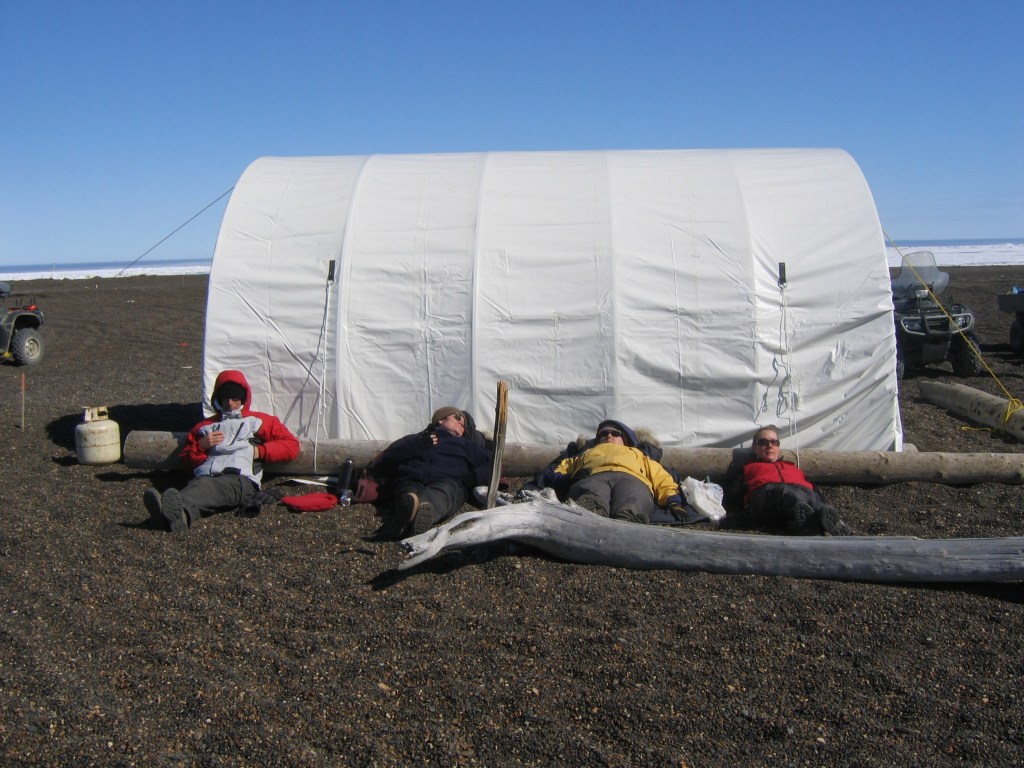
During the short Arctic field season, one rests when one can.

Place is hard, since there are several sites, so I’m going with North Slope of Alaska.
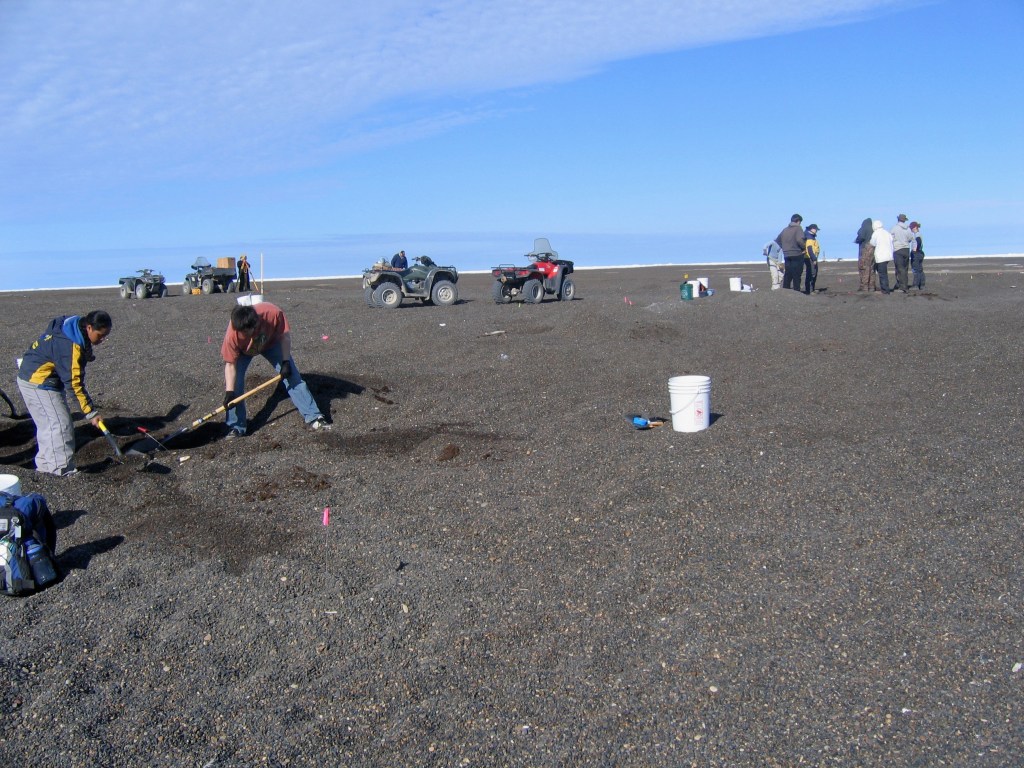
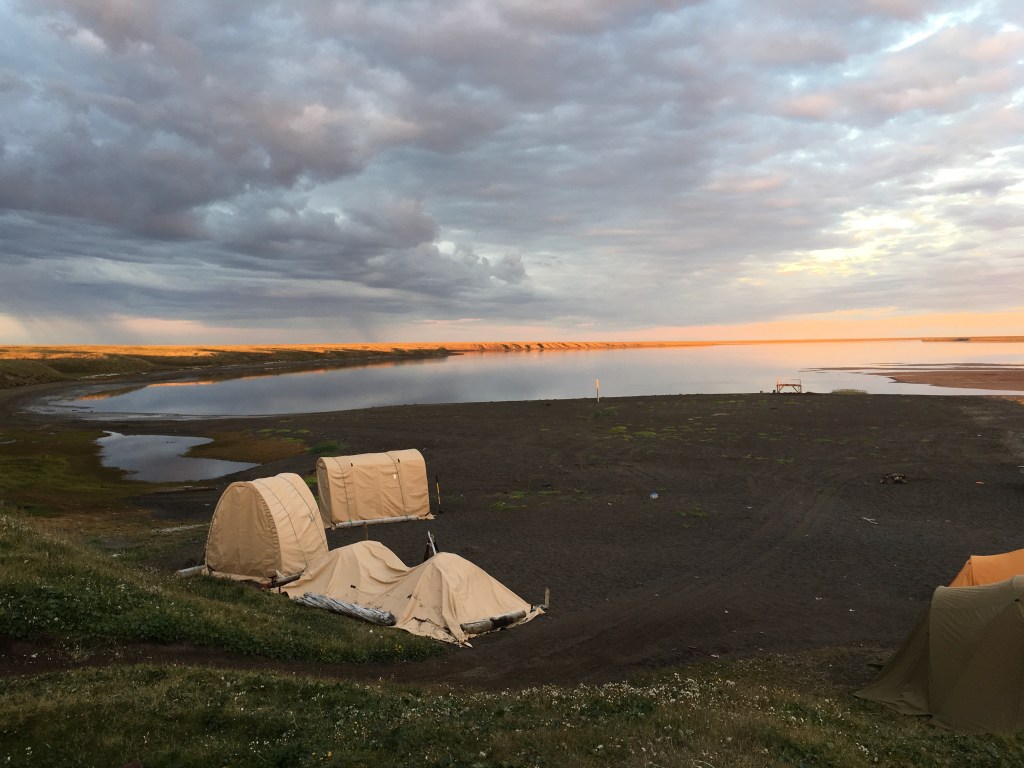
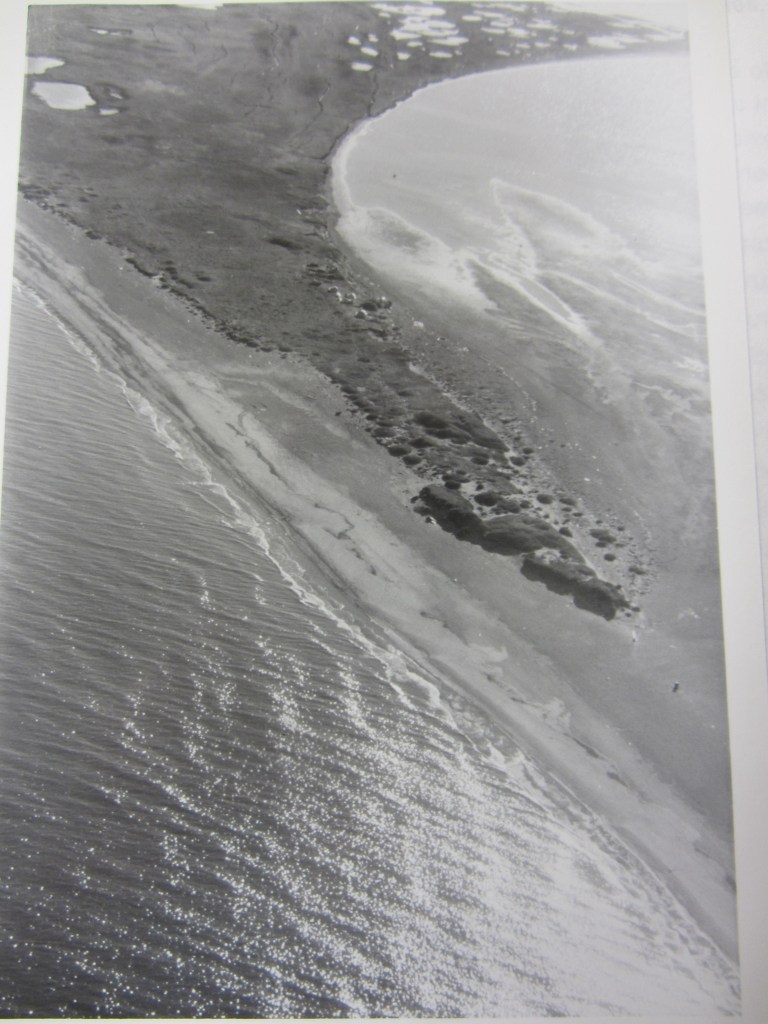
Well, I’m catching up, so this should have been posted Thursday…

I am an Arctic archaeologist/anthropologist. I have lived in Utqiaġvik (formerly Barrow), Alaska since 1996. I mostly work on Arctic Alaskan coastal sites and sustainability, and spend a lot of time dealing with erosion, although I am a zooarchaeologist at heart. I chair the SAA Committee on Climate Change Strategies and Archaeological Resources.

Do you work with some aspect of people and permafrost? There is a session on that topic at ICASS X (Arkhangelsk, June 15-20, 2020). The deadline for abstracts is extended to January 20, 2020!
The session is called “People and Permafrost in a Changing Arctic.” The session abstract shown on the website is a placeholder that hasn’t been updated yet. The up-to-date version is below.
Apply here (under the Abstract Submission link) : https://icass.uni.edu
People and Permafrost in a Changing Arctic
For thousands of years, permafrost has been a constant in most of the Arctic. Communities and lifeways have literally been built on the assumption that it would endure in perpetuity. Now, in response to recent warming trends, permafrost degradation and its numerous societal and environmental impacts are becoming widespread. Coastal bluffs eroding into the sea, roads like washboards or washed away, fill collapsing around pilings supporting public infrastructure, archaeological sites and cultural heritage thawing and rotting, and ice cellars thawing and flooding, are only some of the effects becoming commonplace across the Circumpolar North.
This session will bring together interdisciplinary research focused on changing permafrost and its impacts on people and landscapes as well as human resilience and adaptation in Arctic coastal permafrost areas. We seek to develop synergy between researchers interested in these topics and expand PerCS-Net (Permafrost Coastal Systems Network), an international network of researchers dealing with permafrost systems in transition. We welcome papers covering various aspects of these issues, from identifying new types of social and environmental disruption to monitoring to attempts at adaption. Contributions from community members and holders of Indigenous knowledge and local knowledge and researchers successfully engaging directly with Indigenous communities are particularly welcomed.
Deadline is January 20, 2020.
Apply here (under the Abstract Submission link) : https://icass.uni.edu
—
About a month ago, Tracey Sinclaire and Beth Verge from Anchorage TV station KTUU came to Utqiagvik to do a number of weather/climate-related stories. One was on the effects of coastal erosion. I took them out toward Nuvuk/Point Barrow as far as seemed prudent for the vehicle I had, and got interviewed. The weather was quite challenging while they were here, but they hung in and got stories on the NOAA site, and the blue football field which is endangered by coastal erosion.
We got into town late last Thursday. The field season went pretty well, after a slow start due to ice preventing us from getting out. We lost a few days to major storms, but we had a great crew and accomplished a lot.
Breaking camp was a bit of a challenge, since we were down to seven people in the field. The big boat was scheduled to arrive at 9AM, so we broke everything down the day before except for the mess tent and the latrine, plus our sleeping tents. Then we got up at 6 AM and took down all the sleeping tents, and started ferrying gear to the beach with the ATV & trailer.
It turned out the boat ramp wasn’t in the water back in town, so the boat didn’t make it until nearly 1PM, after having to launch into Elson Lagoon and go around Point Barrow. It was a cold morning, and once we had stuff packed, it was hard to stay warm, especially since we’d dressed for hard work and packed up everything else. At one point, several of the crew were napping in a ditch.
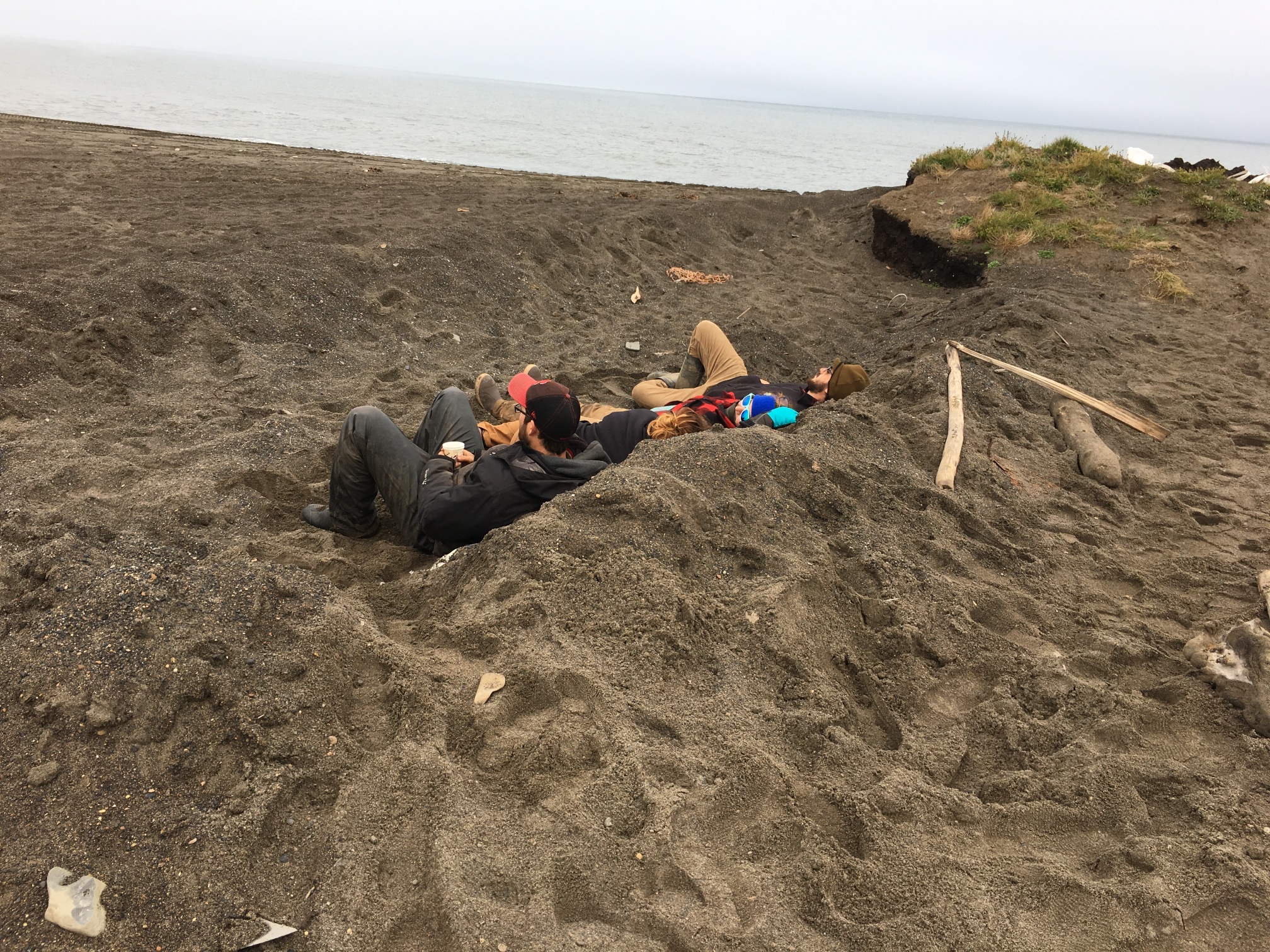
The boat had to make two trips, so we sent 3 people up with the first load, and then 3 more with the second. I drove the ATV & Tubby back to town, so I was the last one in. I left before the boat, but Doctor Island is pretty fast, and I was riding into a north wind and kept meeting people and stopping to chat, so they beat me home.
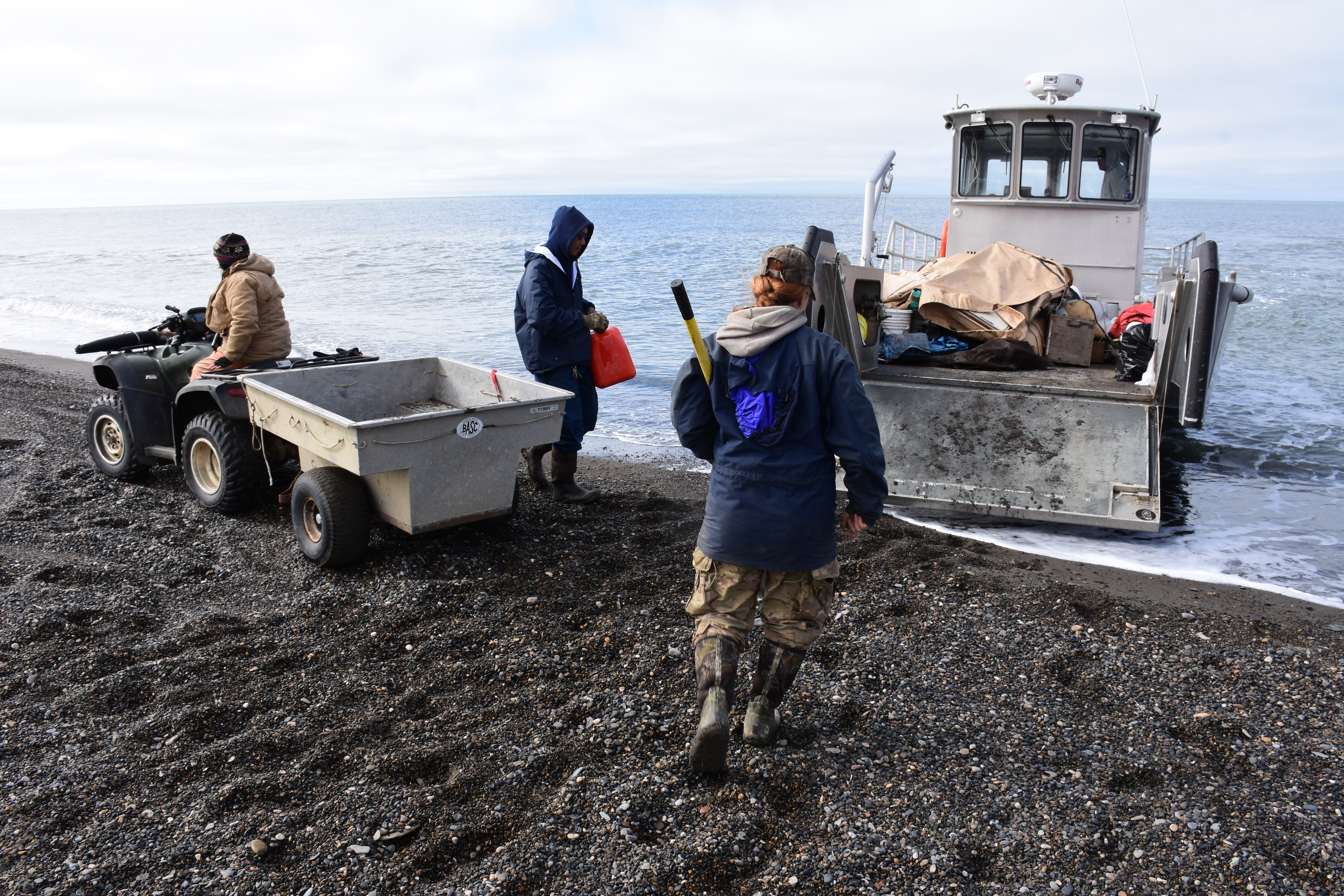

Our first day back was the last day of the UIC Science Fair, and the archaeology lab was featured tour. Also I had a presentation scheduled. Everyone was really tired, but we managed to pull things together for a good tour, and in fact had visitors well past the scheduled end of tours. The presentation was well attended.
As I write this, another early storm with winds from the West is brewing, with predictions of coastal erosion.
I spent most of the week in Seattle at the Arctic Observing Open Science meeting. Ben Fitzhugh and I were the point persons for the broader GHEA/IHOPE Emerging Knowledge Hub on Global Environmental Change Threats to Heritage and Long Term Observing Networks of the Past. This is a long and fancy way of talking about the threats that sea level rise, ice retreat, and permafrost warming pose for archaeological sites in the North. Since this was not an archaeological meeting, most of the folks were either natural scientists or resource managers. We focused on the kind of data that archaeological sites contain that are more than relevant to answering the kinds of questions they are asking, while pointing out that the data is vanishing quickly. The library is on fire!
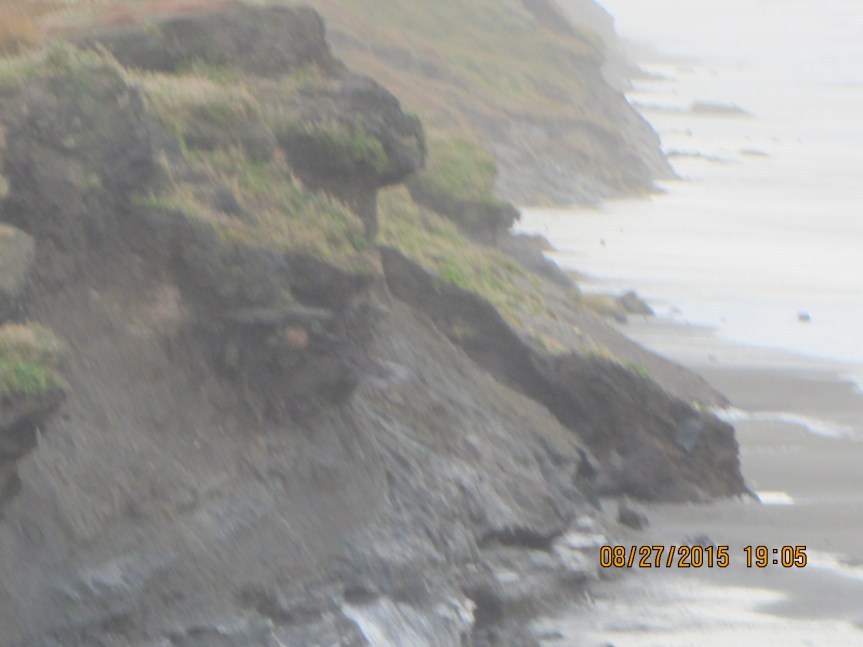
Ben and I each were the lead on a talk (both massively multi-authored), and we also did a poster, with a similarly large number of contributors. Ben’s talk was in the Marine Ecosystems session. It seemed like it interested the audience, which was primarily oceanographers, and related agency and funding folks.
Mine was in the Human Dimensions session, since the Coastal Processes session we had aimed for apparently didn’t get enough papers. I followed a paper on frozen heritage (primarily ice patches and the preliminary stages of development of site evaluation schema) by Martin Callanan and Shelby Anderson, so the issues were thoroughly driven home. The audience included a number of natural scientists (!), and the discussions included the relevance of archaeology to both other fields of research and to developing toolkits for sustainability.
Our hope is we woke some of our colleagues up to both the potential of archaeological sites to provide data, and the need to find a way to get that data that doesn’t rely entirely on Arctic Social Science funding.
My talk and the poster are up on both my Academia.edu and ResearchGate pages, if you would like to see them.